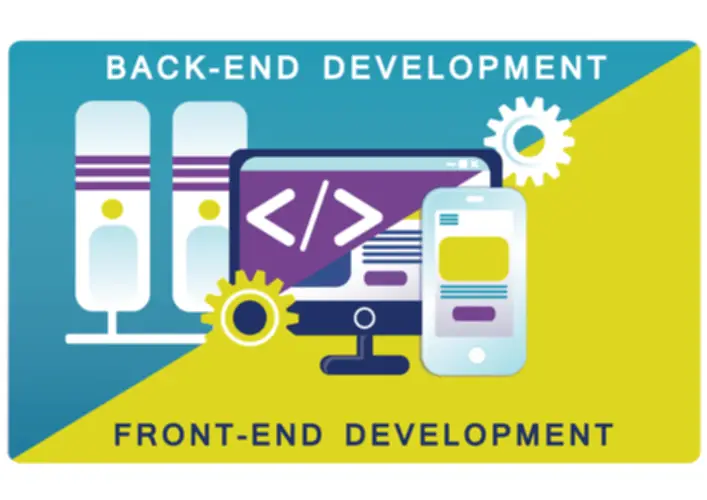Having examined the key Prompt Engineering challenges in AI for telecommunications suppliers and potential options, let’s now discover particular technical domains where AI really shines. For firms offering AI consulting providers, greedy these very important AI-driven areas is important to offer priceless insights. As for the real-world examples, Vodafone uses TOBi, an AI-powered virtual assistant that handles buyer queries with machine-like effectivity, making certain precise solutions whereas escalating advanced problems to human brokers.
Firm

One of the most important ways that AI is being used within the telecom trade is to improve community efficiency. AI can be used to analyze data from community sensors to identify potential issues before they occur. This allows telecom suppliers to take proactive steps to repair issues and forestall outages. AI-driven capacity planning permits networks to scale successfully by predicting future calls for primarily based on developments and usage patterns. This is usually a cross-functional effort involving network planning teams, financial analysts, and knowledge scientists. They collaborate to interpret the AI’s forecasts and integrate this data into the company’s strategic planning ai use cases for telecom processes.
Additional, the platform predicts customer habits, analyzes digital footprints, and assesses marketing campaign effectiveness to provide insights on customer conversion, profiling, and sentiment analysis. It is the centralized location the place the company displays and manages its networks and systems in real time to prevent disruptions and community failures. It might help enhance workflows and useful resource allocation and capability planning and scale back doubtlessly fraudulent activities.
How Ai Is Helping Revolutionize Telco Service Operations

With the promise of seamless connectivity in distant and underserved areas, NTN technologies maintain immense potential. Nonetheless, integrating these options into existing infrastructure presents technical challenges, requiring sturdy collaboration between telcos, satellite suppliers, and regulatory our bodies. Its actual power lies in anticipation, predicting future wants and challenges before they come up. As telecommunications corporations implement AI, they first need to arrange processes for knowledge administration. Nevertheless, 90% of individuals nonetheless choose customer support from a human rather https://www.globalcloudteam.com/ than a chatbot. When clients have complex issues, interacting with chatbots can only cause frustration.
- This architecture helps both granular control and broad oversight, with every tier operating underneath specific performance metrics and qc.
- They analyze customer knowledge in real-time to supply tailor-made product recommendations, streamline the checkout course of, and even handle stock so well-liked items are at all times in stock.
- AI analyzes customer information together with user demographics, usage patterns, and preferences to establish distinct segments throughout the customer base.
- This is commonly a cross-functional effort involving network planning groups, financial analysts, and data scientists.
- Now the sector should address the pandemic-related changes to how folks work and store, which have triggered demand to surpass all expectations.
Standard safety technologies depend on rules and signatures to detect threats, but this information might soon turn into obsolete. Opponent ways are evolving rapidly, and the number of advanced and unknown threats to communication service supplier networks continues to grow. Synthetic intelligence / ML algorithms could be taught to adapt to a changing threat landscape by making impartial selections about whether or not the anomaly is malicious or by offering a context to help human specialists. Artificial intelligence techniques, like neural networks and machine studying, have been used for years to enhance the detection of malicious code and different threats in telecommunications.

Implementing AI in telecoms additionally allows CSPs to proactively fix problems with communications hardware, similar to cell towers, power traces, knowledge heart servers, and even set-top boxes in customers’ homes. In the brief time period, community automation and intelligence will enable better root trigger evaluation and prediction of points. Long time period, these applied sciences will underpin extra strategic targets, corresponding to creating new customer experiences and dealing effectively with emerging enterprise needs. AI predicts peak time for customers’ calls and optimizes the workforce for telecom corporations. For occasion, such solutions summarize name content and highlight key points along with follow-up actions like quick troubleshooting or resource allocation. The summarized name content also provides particulars like elevated complaints and decreased engagement, which permits businesses to foretell the churn rate.
For example, a telecom company might deploy an AI system that makes use of NLP to investigate customer messages and identify key points. Simultaneously, ML algorithms, educated on historical data, can predict options and suggest applicable responses. AI allows telecom suppliers to optimize sources and scale back prices by automating routine processes. By predicting maintenance wants and stopping service failures, AI reduces downtime and minimizes expensive repairs. By leveraging generative models, telecom operators can simulate numerous community configurations and eventualities, enabling them to identify optimum setups that maximize efficiency and performance.
With AI providing benefits like value reduction, higher customer experience, and optimized community operations, it’s no surprise more and more telecom corporations are jumping on board. Market.us Analysis predicts that the global AI in telecom market will rise from $1.8 billion in 2023 to $23.9 billion by 2033. Additionally, AI implementation is promised to boost the annual income of telecom operators by up to $11 billion by 2025.
Deutsche Telekom, for instance, plans to leverage AI to generate roughly €1.5 billion in new revenue streams and scale back costs by €700 million by 2027. As a result, workers really feel extra empowered, motivated, and geared up to contribute successfully to the company’s success, finally resulting in a extra expert and resilient workforce. Let’s delve into the transformative potential of AI for telecom and uncover the innovative methods for its integration. As per the report of Precedence Analysis, the estimated value of the worldwide AI in telecommunications market stood at approximately $1.34 billion in 2023, with projections indicating a surge to about $42.66 billion by 2033. The timeline for making a Minimal Viable Product (MVP) can range considerably depending on the complexity of the product and the precise necessities of the project.
AI can meet buyer needs by offering extra personalised companies and advertising across the client journey. A 2024 study by Nvidia (link resides outside of IBM.com)1 found practically 90% of telecom firms use AI, with 48% in the piloting part and 41% had been actively deploying AI. Most telecom service suppliers (53%) agree or strongly agree that adopting AI would offer a competitive advantage, based on the Nvidia examine. The 6G future guarantees to boost network performance even additional with clever, self-governing RAN and improvements to distributed AI and machine learning. Additionally, AT&T has partnered with NVIDIA to optimize subject technician routing, enhance service delivery, and scale back operational costs.
AI-powered community optimization instruments can predict traffic patterns, determine potential network bottlenecks, and make real-time changes. AI algorithms constantly monitor community efficiency for telecom operators to proactively resolve issues earlier than they affect prospects. Our method is grounded in overarching strategies, ensuring that artificial intelligence in telecom not only meets but exceeds expectations by way of its transformative power. Telecom firms generate vast quantities of knowledge from community operations, buyer interactions, and market developments.
Shared spectrum pioneer CBRS uses AI to instantly coordinate frequency usage by devices and networks. AI routes customer calls optimally based on individual preferences and IVR interactions. Spark New Zealand deployed AI routing, reducing deserted calls by 40% while improving common hold time.
They’re sometimes managed by network operations teams, often with backgrounds in network engineering and computer science. 5G’s lengthy rollout promised sooner connectivity and the power to attach extra devices by way of IoT, revolutionizing how customers join with businesses and one another. Another purpose is that employees with enhanced abilities can do a greater job than those workers who are unable to reap the advantages of AI.


